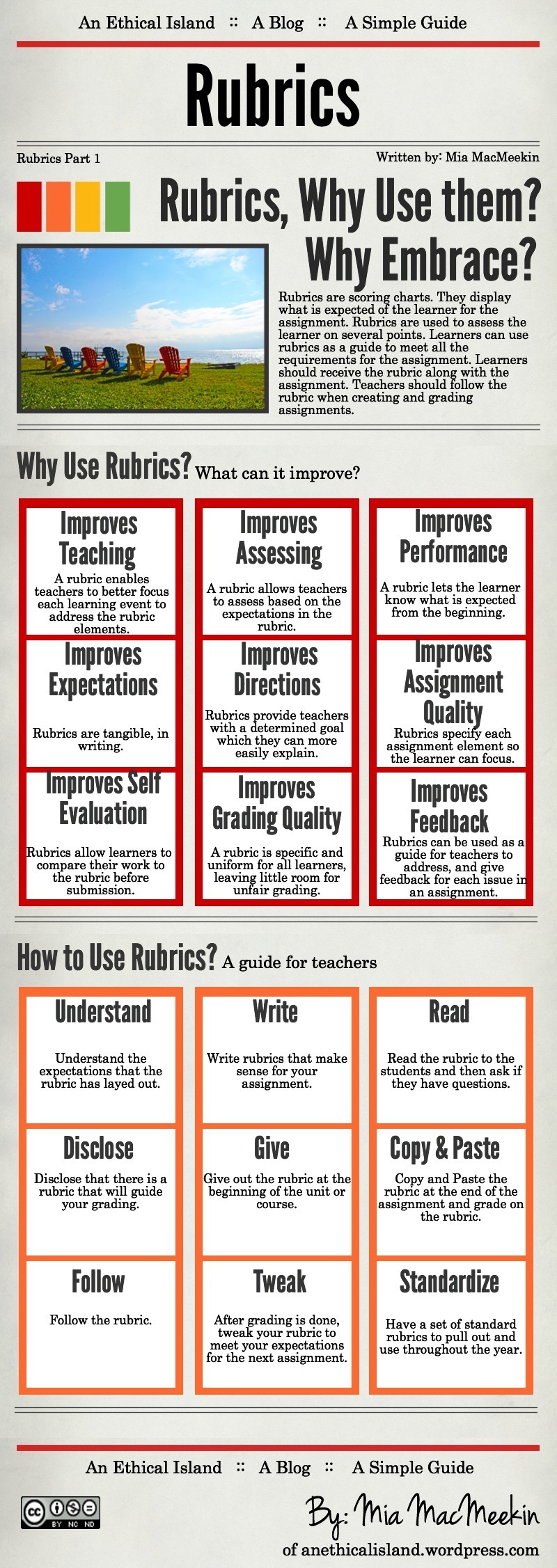Hello, faculty!
This week we are exploring the many benefits and ways to create rubrics for your courses. Rubrics have become a popular grading tool as they offer consistency for both the students and instructors and provide opportunities for accessibility. They also offer students the chance to become more aware of their learning process and progress. We encourage you to explore the resources provided on how to create rubrics for both the in-class and online environments. Instructional Development is happy to meet with you to design rubrics for your courses and can offer additional resources in your planning. As we head into the Thanksgiving holiday next week, we will not be sending out a newsletter but encourage you to visit some of our past offerings. We hope you have a wonderful holiday!
-The ID Team
CITS | Instructional Development
Who:
Why should you use a rubric?
A rubric is a type of scoring guide that assesses and articulates specific components and expectations for an assignment. Rubrics can be used for a variety of assignments: research papers, group projects, portfolios, and presentations.
According to Cornell University’s Center for Teaching Innovation, rubrics help instructors:
- Assess assignments consistently from student to student.
- Save time in grading, both short-term and long-term.
- Give timely, effective feedback and promote student learning in a sustainable way.
- Clarify expectations and components of an assignment for both students and course teaching assistants (TAs).
- Refine teaching methods by evaluating rubric results.
- Rubrics help students:
- Understand the expectations and components of an assignment.
- Become more aware of their learning process and progress.
- Improve work through timely and detailed feedback.
How:
In this edition learn how:
- To create a rubric for your discipline, content, and assessments.
- To create a rubric in myCourses.
You:
Our goal for you is to:
- Create a more effective and efficient grading system.
- Create a form of assessment that is accessible and adaptable.

Using Rubrics in Your Classroom
🎧 Listen to Podcast
Rubrics help to add grading consistency to assignments that can be difficult to grade. Adding a grading structure makes grading assignments easier and faster. Completed rubrics provide immediate feedback to students that is meaningful.
Still Not Sold On Rubrics?
🎧 Listen to Podcast
This is the space where we explore the art and science of being more effective at facilitating learning. We also share ways to increase our personal productivity approaches, so we can have more peace in our lives and be even more present for our students.
 |
Build Effective Rubrics in Just Five Steps |
 |
Designing Grading Rubrics |
 |
A Rubric for Evaluating E-Learning Tools in Higher Education |
 |
VALUE Rubrics (Download Free Rubrics!)–American Association of Colleges and Universities |
- 11/21: Excel Formulas and Functions
- 11/29: Qualtrics-Getting Started
- Check out our other self-paced offerings!
⭐️New Approaches to Teaching and Learning Conference Registration and Call for Proposals is Open
Instructional Development works with faculty to…
- Explore, design, and experiment with different teaching and learning modes.
- Research and integrate technologies that can enhance teaching and learning.
- Design and develop online courses and programs.
- Write learning outcomes, design assessments, craft activities, and develop content.
- Utilize best practices for using instructional technologies.
Feel free to contact us online to book an appointment!








